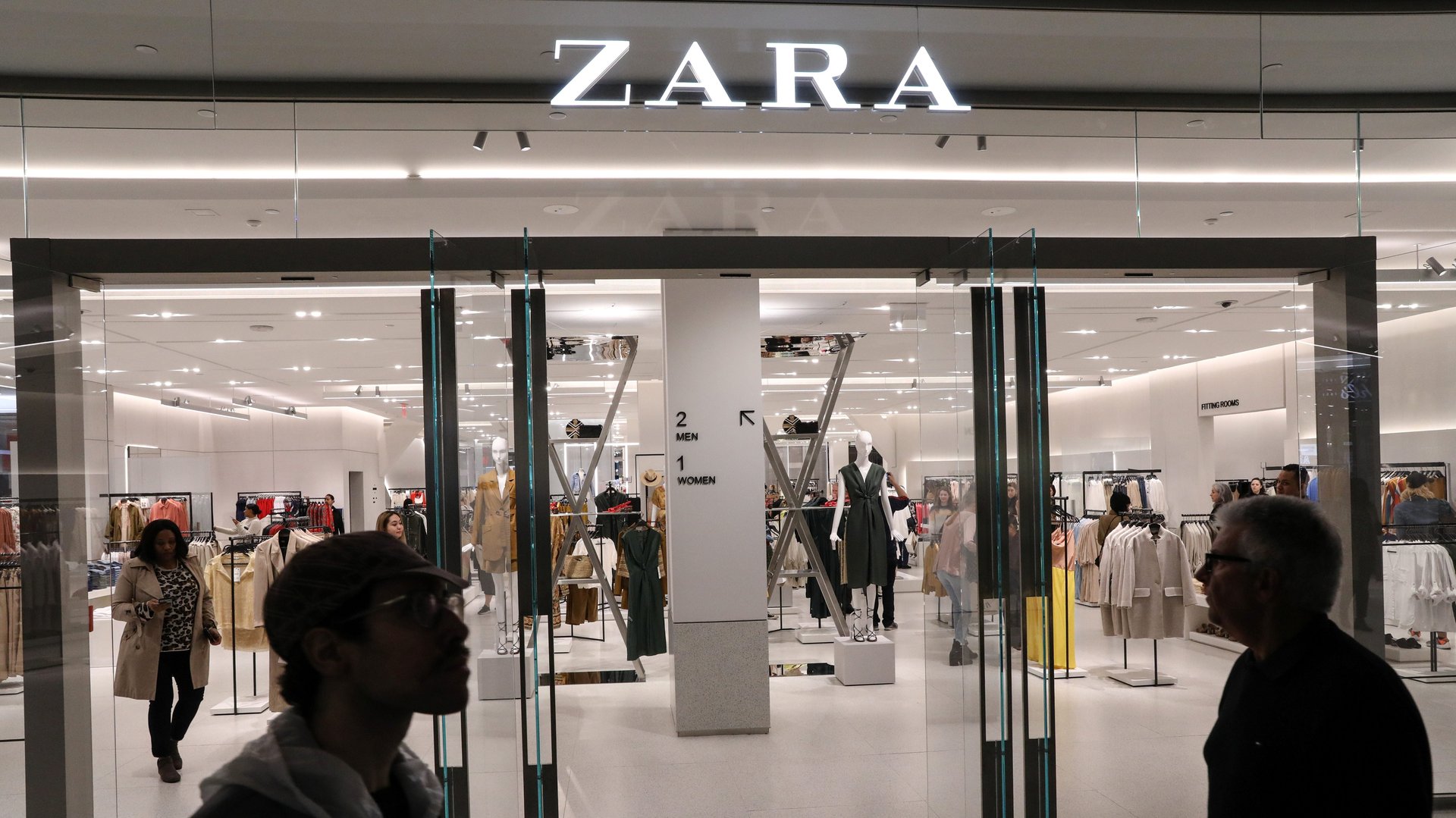Late to e-commerce, Zara is now blanketing the globe with it
Despite becoming one of the world’s most successful fashion brands by being faster and more responsive to shoppers than most of its competitors, Zara dragged its feet joining shoppers online. It wasn’t until 2010 that the company finally launched e-commerce—a decade after (paywall) its online rival ASOS got running. Even then, it was a bit slow rolling it out beyond its core markets.


Despite becoming one of the world’s most successful fashion brands by being faster and more responsive to shoppers than most of its competitors, Zara dragged its feet joining shoppers online. It wasn’t until 2010 that the company finally launched e-commerce—a decade after (paywall) its online rival ASOS got running. Even then, it was a bit slow rolling it out beyond its core markets.
The fast-fashion label and its parent company, Inditex, are quickly making up for lost time, though. The company has been in the midst of a rapid global e-commerce expansion for Zara, which makes up about 70% of its business, and its other brands as it seeks to revive its weakening sales.
Since March, Zara has launched online sales in Brazil, Indonesia, Serbia, Morocco, Egypt, Saudi Arabia, Lebanon, Israel, Bahrain, Oman, Kuwait, Qatar, Jordan, and the United Arab Emirates. Between September and October, it plans to go online in Colombia, Ukraine, South Africa, and the Philippines.
In 2018, it reported (pdf, p. 20) that the number of markets where its brands offered online sales reached 156. The number where they had stores stayed steady at 96. Though total sales growth slowed for the year, online sales grew more than a quarter to reach 12% of Inditex’s total business.
The brand has been under pressure to innovate as customers change how they shop and a crop of ultra-fast, online competitors rises up. One, the British retailer Boohoo, reported earlier this year that annual sales surged 48% to £857 million (about $1.1 billion)—far shy of Zara’s sales, but growing fast nonetheless. In addition to boosting its online sales, Zara has been updating its physical shops to integrate digital technology and closed hundreds of underperforming locations to focus on opening bigger, better spaces.
The company says both have helped. Inditex’s total sales grew 7% to €12.8 billion ($14.1 billion) in the six months through July, a rebound from the 3% it recorded during the same period last year, at the time marking Inditex’s slowest sales growth in more than a decade. On a call with investors to discuss Inditex’s earnings for the first half of 2019, CEO Pablo Isla Álvarez de Tejera noted that sales at stores and on e-commerce operating at least a year grew 5%, “with positive like-for-like growth across all geographical areas, across all concepts and importantly, in both physical stores and online.” Net income also grew 10%.
But like other fast-fashion giants, such as H&M and Primark, Inditex’s margins, which indicate profitability, are dragging lately. Currency effects are one issue, and one analyst pointed to weak full-price sales. It somewhat overshadowed the uptick in sales as analysts wonder how Zara can improve its profitability.